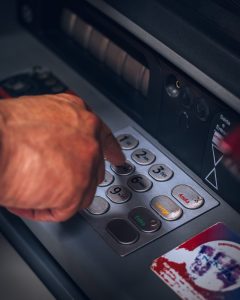When it comes to trading in the forex market, one of the most important skills that a trader must possess is the ability to identify key levels. Key levels are price points where the market has a higher probability of reacting, either by bouncing off or breaking through. Drawing key levels is a crucial part of technical analysis and can help traders make more informed trading decisions. In this article, we will explain how to draw key levels in forex.
Step 1: Identify the Trend
The first step in drawing key levels in forex is to identify the trend. The trend is the direction in which the market is moving. There are three types of trends: uptrend, downtrend, and sideways trend. To identify the trend, traders use various technical indicators such as moving averages, trend lines, and price patterns. Once the trend is identified, traders can start drawing key levels.
Step 2: Identify Support and Resistance Levels
The second step in drawing key levels in forex is to identify support and resistance levels. Support levels are price points where the market has a higher probability of bouncing off, while resistance levels are price points where the market has a higher probability of breaking through. To identify support and resistance levels, traders use various technical indicators such as horizontal lines, trend lines, and Fibonacci retracements.
Horizontal lines are the most basic way to draw support and resistance levels. Traders draw horizontal lines at price points where the market has bounced off or reversed in the past. These price points can be identified by looking at the historical price chart. Once the horizontal lines are drawn, traders can use them as a guide to identify potential trading opportunities.
Trend lines are another way to draw support and resistance levels. Trend lines are drawn by connecting two or more price points that form a trend. Trend lines can be either uptrend lines or downtrend lines. Uptrend lines are drawn by connecting two or more higher lows, while downtrend lines are drawn by connecting two or more lower highs. Once the trend lines are drawn, traders can use them as a guide to identify potential trading opportunities.
Fibonacci retracements are a more advanced way to draw support and resistance levels. Fibonacci retracements are based on the Fibonacci sequence, which is a mathematical sequence that occurs in nature. Fibonacci retracements are drawn by connecting two price points, usually the high and low of a trend. Once the Fibonacci retracements are drawn, traders can use them as a guide to identify potential trading opportunities.
Step 3: Confirm the Key Levels
The third step in drawing key levels in forex is to confirm the key levels. To confirm the key levels, traders look for price action signals such as candlestick patterns, chart patterns, and momentum indicators. Price action signals can help traders confirm whether the market is likely to bounce off or break through a key level.
Candlestick patterns are one of the most popular price action signals. Candlestick patterns are formed by the open, high, low, and close of a price bar. Some of the most common candlestick patterns include doji, hammer, and engulfing patterns. Candlestick patterns can help traders identify potential reversal points in the market.
Chart patterns are another popular price action signal. Chart patterns are formed by the price action on a chart. Some of the most common chart patterns include head and shoulders, double top, and triangle patterns. Chart patterns can help traders identify potential breakout or reversal points in the market.
Momentum indicators are technical indicators that measure the strength of a trend. Some of the most common momentum indicators include the relative strength index (RSI), moving average convergence divergence (MACD), and stochastic oscillator. Momentum indicators can help traders identify potential reversal points in the market.
Conclusion
Drawing key levels is a crucial part of technical analysis in forex trading. Key levels are price points where the market has a higher probability of reacting, either by bouncing off or breaking through. To draw key levels, traders must first identify the trend and then identify support and resistance levels. Once the key levels are drawn, traders must confirm them using price action signals such as candlestick patterns, chart patterns, and momentum indicators. By mastering the art of drawing key levels, traders can make more informed trading decisions and increase their chances of success in the forex market.






